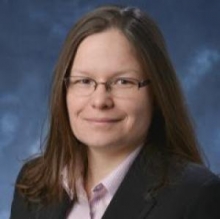CEE Seminar: Impact of Cement Cracking on Drying Shrinkage and Controlling Concrete Creep through Dynamic Loading

Assistant Professor, Co-director of the Center for Infrastructure, Energy and Space Testing (CIEST)
Civil, Environmental and Architectural Engineering
University of Colorado, Boulder
Abstract: The rate of concrete deterioration has become an increasing issue over the last few decades. Concrete deterioration is driven by moisture penetration through cracks and damage. Modern cements encourage cracking through higher stiffness and lower creep. This seminar explores two aspects of this issue: crack development during drying shrinkage and methods to control creep after construction.
By conducting companion 3D X-ray microscope (XRM) scans and shrinkage studies of cement samples with different geometric ratios, the impact of crack devleopment on this size/effect relationship is studied. The scanned internal surface area (incorporating pores and cracks) provides a more accurate representation of drying surface than the standardized volume-to-surface (V/S) relationship. By integrating the internal surface area into the computed pore humdity distributions, and considering the probability of developing surface cracks, it is possible to understand how cracking and porosity play a role in the shrinkage-to-V/S relationship. Since concrete shows viscous behavior, one should be able to alter its time-dependent behavior by exposure to time-varying loads. Experimental results and theoretical models describing the acceleration of creep exist. This work presents the first efforts to use dynamic loading exposure to decelerate creep. Creep characteristics of concrete specimens are studied experimentally before and after loading with uniform (single frequency) and random (multiple frequency) cyclic loading events. The results confirm that deceleration is possible with both cyclic loading and random loading exposure only when the loading function caries a low amount of energy at a high rate, or with a broad range of frequencies.
Bio: Mija H. Hubler began her study of structural engineering in 2002 at the University of Illinois at Urbana-Champaign. After graduating with a bachelor of science degree from the civil engineering department in 2006, she spent three years pursuing a master's degree from Cornell University. She completed her doctoral work in 2013 at Northwestern University, and is currently an assistant professor at CU Boulder. Hubler is a member of ACI committee 209, the International Association for Life-Cycle Civil Engineering, and the RILEM technical committee on material modeling and structural analysis. Her research interests include structural engineering, construction materials and methods, mechanics and experimental analysis.
Share
Upcoming Events
-
MSE 298 Seminar: Translational Neuroelectronics
-
CBE Seminar: Water Structure and Computational Design of Water-mediated Solute-surface Interactions
-
CEE Ph.D. Defense Announcement: Ultra-High-Ductility and High-Strength Cementitious Materials for Advanced Manufacturing of Structures
-
CALIT2 Distinguished Lecture: Strategic Directions for Electronics Packaging
-
MSE 298 Seminar: Science-Based Advanced Manufacturing of Metals and Alloys
